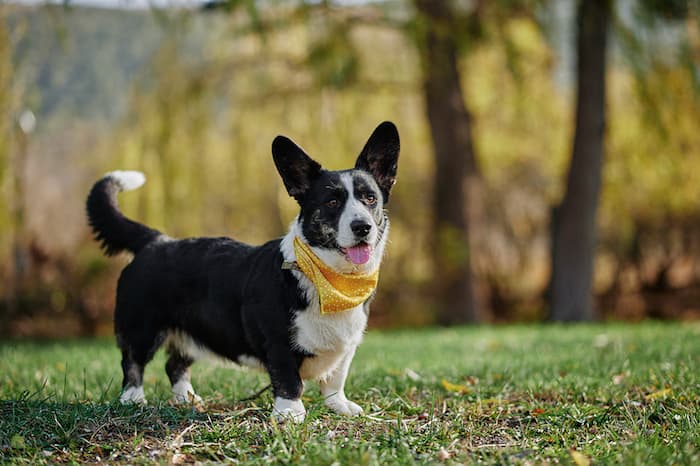“As we learn more about how human-animal interaction can reduce stress and anxiety, we think [pet therapy] might be a really interesting cost-effective method of helping students’ mental health.” said an assistant professor at Tufts University Megan Mueller, who has conducted research on the benefits of pet therapy. The Centers for Disease Control & Prevention (CDC) states that around 4.4 million children between the ages of 3 and 17 have anxiety, and the number is also rising among college students. As science has proven, giving these children a therapy dog could significantly improve their mental health. Here’s how to find the right therapy dog for your child.
Ideal characteristics
There are currently around 50,000 therapy dogs in the United States. But not all dogs are suitable as therapy dogs. The key trait they must have is friendliness. The dog will come into contact with lots of different people and will experience many different situations, so being friendly is a must. They should also be good around other pooches. A good therapy dog is able to focus on the job in hand and avoid stimuli. Dogs are well-known for getting over-excited at the sight of a cat or a squirrel, but this is a big no-no when the dog is a therapy dog. They need to stay in work mode at all times and ensure the child’s needs are met. To work in rehab services, the dog needs to be clever, too. Dogs typically have the intelligence of a 2 and a half-year-old and have an IQ of around 100. This does differ from dog to dog, though. To become a therapy dog, extensive training is required, so the dog needs to be smart and eager to pleas
Training abilities
The American Kennel Club (AKC) has a list of recognized therapy dog organizations where you can get a therapy dog for your child. These dogs have had all the necessary training to ensure they can work safely and appropriately as therapy dogs. An important role many therapy dogs have is the ability to assist with their human’s physical problems, as well as their mental health. Studies have found that children who have animal-assisted therapy experience less pain following surgery. Children with cerebral palsy commonly rely on therapy dogs. They also tend to have surgery to help increase their mobility and improve their posture. A therapy dog can help with the pain immediately after this type of surgery, as well as in the long term. Common cerebral palsy therapies include physical therapy, occupational therapy, and speech therapy. These therapies include exercises to strengthen the muscles and reflexes. Children may feel anxious about these techniques initially, but a therapy dog can help to reduce these feelings.
Recommended breeds
Any breed can be trained as a therapy dog, but there are some which are better suited than others. These include:
- Border collies
- Lurchers
- Labradors
- German Shepherds
- Beagles
- Bichon Frises
- Corgis
- Yorkshire Terriers
- Pugs
- French Bulldog
Labradors are the 7th brightest breed of dog, the most popular breed of dog in America, and a popular choice for a therapy dog. They make good therapy dogs because they are easy to train, come from a working background, and have a coat that is easy to maintain. But, Labradors are large dogs and aren’t suitable for all children. For example, a child who relies on a wheelchair may find a smaller, lap dog, best. Cuddling and petting play an important role in the care a therapy dog can provide, so a dog that can jump up and snuggle up on the lap of a child who’s in a wheelchair may be the preferred option.
The right level of maturity
Most people think that you have to start training a dog to be a therapy dog from when they’re a puppy. But, this isn’t true. The average age of a therapy dog is between 4 and 6 years of age. This age is often preferred as the dog will be more mature and will naturally have a calmer temperament than a pup. Younger dogs can still become therapy dogs, though, so long as they have the right characteristics and have completed their training. The youngest age a dog can qualify to be a therapy dog is one year of age. However, it is important that you think about the lifespan of the dog. Children can find it tough to deal with the loss of a pet. You don’t want your child and their therapy dog to have just a few years together before they’re parted, so carefully think about the age of the dog you get. It’s easy to see whether a dog is mature enough to make it as a therapy dog. They’ll be very sociable, extremely calm, good in unfamiliar environments and strange situations, and be exceptionally tolerant of others.
Therapy dogs are growing in popularity across the world. They can particularly help children with a range of issues, including anxiety. But it’s important the right type of therapy dog is chosen and that consideration is made into the breed, size, age, and temperament of the dog



